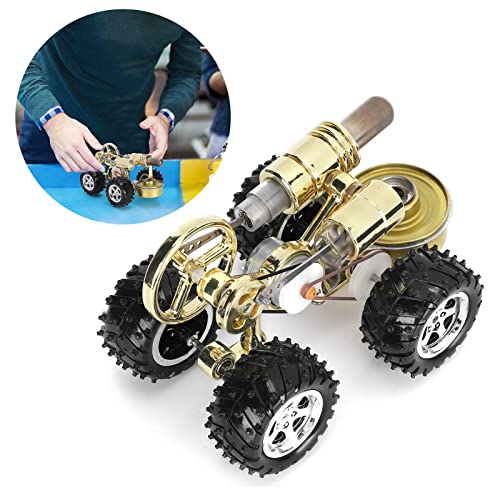This air compressor will be used in my Ambitious ORC Turbine project to supply 6 psi nominal air pressure at 70 L/min to a siphon-type fuel nozzle. There are several variations of wobble plate (aka, Swashplate) designs but the one I chose has 5 double end pistons operating inside 10 cylinders and produces a very smooth, steady output airflow. I know I could have used a far simpler vane pump design, but I really wanted to see if I could build a swashplate air compressor.
The compressor is nearly finished, I'm still waiting for two online orders to arrive: a 3:1 reduction belt & pulley set, and a rotary shaft seal, and I will add 10 little air filters, 5 on each end plate, cut from common dishwashing sponges.
Using my lathe to spin the compressor's drive shaft, I was able to chart air pressure outputs at different RPMs, with the fuel nozzle attached to the compressor.

A few specs: 85mm diameter x 120mm length. Drive shaft is 8mm diam.
Displacement: 6.86 cubic inches (112.4 cc) per revolution.
Pistons and "block" are 6061 aluminum.
Reed valve plates are 0.008" stainless.
The small screw in the top is used to partially fill the center section with oil to keep both swashplate and pistons lubricated.


The 5 large-ish round holes in both end caps will be used to hold small disc-shaped air filters.

End cap removed shows piston ends.


The smallest parts shown are made by brazing 6mm ball bearings onto a small flat washer. The washer slides flat along the swash plate while the ball bearing allows for constantly changing angles as the swash plate rotates. The bearing fits into a semi spherical machined surface in each piston and pushes against the centerline of the piston.
 This pic was taken before I added the O-rings.
This pic was taken before I added the O-rings.
End cap and reed valve plates.

The compressor is nearly finished, I'm still waiting for two online orders to arrive: a 3:1 reduction belt & pulley set, and a rotary shaft seal, and I will add 10 little air filters, 5 on each end plate, cut from common dishwashing sponges.
Using my lathe to spin the compressor's drive shaft, I was able to chart air pressure outputs at different RPMs, with the fuel nozzle attached to the compressor.

A few specs: 85mm diameter x 120mm length. Drive shaft is 8mm diam.
Displacement: 6.86 cubic inches (112.4 cc) per revolution.
Pistons and "block" are 6061 aluminum.
Reed valve plates are 0.008" stainless.
The small screw in the top is used to partially fill the center section with oil to keep both swashplate and pistons lubricated.


The 5 large-ish round holes in both end caps will be used to hold small disc-shaped air filters.

End cap removed shows piston ends.


The smallest parts shown are made by brazing 6mm ball bearings onto a small flat washer. The washer slides flat along the swash plate while the ball bearing allows for constantly changing angles as the swash plate rotates. The bearing fits into a semi spherical machined surface in each piston and pushes against the centerline of the piston.

End cap and reed valve plates.

Last edited:













![TurboCAD 2020 Designer [PC Download]](https://m.media-amazon.com/images/I/51UKfAHH1LL._SL500_.jpg)




























![DreamPlan Home Design and Landscaping Software Free for Windows [PC Download]](https://m.media-amazon.com/images/I/51kvZH2dVLL._SL500_.jpg)



















![MeshMagic 3D Free 3D Modeling Software [Download]](https://m.media-amazon.com/images/I/B1U+p8ewjGS._SL500_.png)









